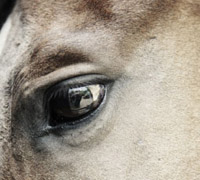 As another hurricane approaches the Mississippi and Louisiana shores, many coastal horse owners will be seeking refuge at the Mississippi Horse Park near Starkville.
As another hurricane approaches the Mississippi and Louisiana shores, many coastal horse owners will be seeking refuge at the Mississippi Horse Park near Starkville.
“The horse park is an ideal facility–far enough from the coast to be safe, but not too far to drive,” Miller says. “It has excellent stalls, arenas, RV hook-ups, showers and bathrooms. It is also a location that is very hospitable to other animals fleeing the storm with families.”
The horse park has 300 stalls and 150 RV sites.
“We want people to feel welcome and comfortable coming to this facility and to this community to ride out the storm,” Miller explains. “In past years, local horse owners donated hay and assisted with animal care. Our intention is to expand our care for future refugees by providing snacks and a meal each day.
“These are among the most sturdy facilities available for animals. Most of Mississippi’s agricenters are fairly new and high-quality facilities that will be comfortable for animals and people,” Miller continues.
Dr. Carla Huston, an MSU College of Veterinary Medicine associate professor of pathobiology and population medicine, serves on the Mississippi Animal Response Team. This team responds after disasters and in emergency situations to assist with animal care and recovery.
“If emergency management is recommending people leave the coast because of pending weather, horses and other animals need to evacuate, also,” Huston says. “When a hurricane approaches, horse owners want to have their animals in the first wave of refugees leaving the warning area to avoid getting caught in traffic and risking overheating trucks pulling trailers.”
Certain measures should be taken before evacuation orders are given. Animals should have current tetanus shots, and owners should have medical kits packed with supplies for treating cuts and abrasions. Have paperwork such as Coggins tests, photos and descriptions of each animal handy.
“When evacuation orders are given, all people should leave. It’s not unusual to have to leave some animals behind during an evacuation. Make sure they have at least a week’s worth of food and water and some sort of identification on them,” Huston says. “Some people spray paint phone numbers on horses and livestock or use permanent markers on hooves. Identification tags can be woven into the mane to help reunite animals with owners if fencing is damaged.”
Secure all barn windows and doors. Depending on the structure, turning horses out to pasture could be the safest thing for them. Animals will still be at risk from flying debris, and they will need to have access to water and food.
When horses are taken to unfamiliar pastures, they may need help seeing wire fencing. If caught in stormy weather, horses may need some type of eye protection to keep them from becoming frightened and to protect their eyes from debris.
“Most people do not have horse blinders, but other materials can be adapted for that purpose. I’ve seen handlers use life jackets and bras to cover horses’ eyes,” Huston says. “During a time of stress, horses will be prone to specific types of injuries and illnesses including cuts and abrasions, colic and laminitis.”
For more advice on preparation needs and first-aid kits, visit the American Veterinary Medical Association’s Web site at www.avma.org and look for disaster preparedness information.






That’s great that there’s a place that will take care of their animals after the hurricane. That takes off alot of worry.
I’m glad that there’s somewhere for them to go.
we are staying here, we are very appreciative for everything they have done for us
galliano, la lafourche parish
Bravo to MSU for taking in so many!